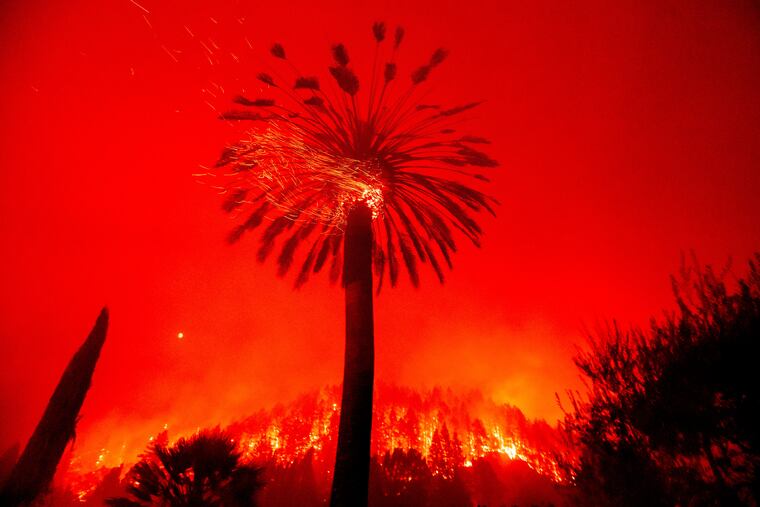California wildfires prompt new warnings amid record heat, erratic winds
Tens of millions of Californians are under heat warnings and advisories as a record-breaking, relentless heat wave continued to roast areas from San Francisco to San Diego.

Tens of millions of Californians are under heat warnings and advisories Thursday as a record-breaking, relentless heat wave continued to roast areas from San Francisco to San Diego. Unseasonably intense high pressure parked over the region is sending temperatures soaring up to 30 degrees above average for this time of year in some areas.
The heat elevated wildfire risks to "critical" in some areas, including parts of the North Bay, where the Glass Fire continues to burn near hard-hit Calistoga. Red flag warnings also were in effect for the South Bay, central Mendocino County, western Monterey County and most of the Los Padres National Forest, Cal Fire stated. This is California's third significant heat wave since mid-August.
While winds are not expected to be nearly as intense as they were Sunday and Monday, when the Glass Fire destroyed vineyards, homes and forced thousands to evacuate with little warning in Napa and Sonoma counties, the heat and shifting winds are expected to make the fire more difficult to contain. The extreme temperatures and erratic winds may build tall plumes of smoke and ash above the Glass Fire and others, allowing them to spread further. Any new fires could also spread rapidly given conditions through Friday.
In the Los Angeles metro area, numerous record highs were set on Wednesday with more likely to fall again on Thursday. For example, Long Beach Airport reached 105 degrees Wednesday, breaking its record of 100, set in 1992. The heat wave on Thursday is expected to reach coastal areas, which had been spared by a breeze off the relatively cool waters of the Pacific Ocean.
Higher elevations in the Los Angeles area remained in the upper 80s to low 90s early Thursday morning.
Fire weather concerns in the Bay Area, where red flag warnings are in place for the North and East Bay regions are focused on the Glass and Dolan fires. Satellite imagery overnight showed that the Glass Fire was burning the hills above Calistoga, and a red flag Warning is expected to be in effect from 1 p.m. Pacific time Thursday through Friday at 6 p.m. The Glass Fire has grown to nearly 57,000 acres and was 5% contained on Thursday morning.
The Weather Service is predicting that northwesterly winds of 25 to 30 miles per hour are likely to reach the Glass Fire region this evening, with continued hot and breezy conditions on Friday as well. These conditions could push the fire to the south and east while feeding extreme fire behavior.
The fire has forced about 80,000 people to leave their homes in Napa and Sonoma counties and has taken a heavy toll on the wine industry, with Sherwin Family Vineyards, the Meadowood Resort, Newton Vineyard, Burgess Cellars, Behrens and Château Boswell all damaged or destroyed, according to news reports. The Calistoga Ranch and Black Rock Inn were also damaged, Eater reported.
California is in the midst of its most damaging wildfire season on record, with more than 3.9 million acres burned, and five of the 20 largest wildfires in state history taking place this year.
Scientists say California's 2020 fire season, and the severe blazes that have extended north to Oregon and Washington, have clear links to human-caused climate change. There has been an increase in acres burned in large fires across the West due to global warming, and projections call for the region to become even hotter and drier, making the region more susceptible to fire sieges like the one taking place. A study published in August shows that California's frequency of fall days with extreme fire-weather conditions has more than doubled since the 1980s.
Heat waves also show a significant human fingerprint, with greenhouse gas emissions boosting the odds and severity of these events. Some case studies show that individual extreme heat events would not have occurred without human-caused global warming.